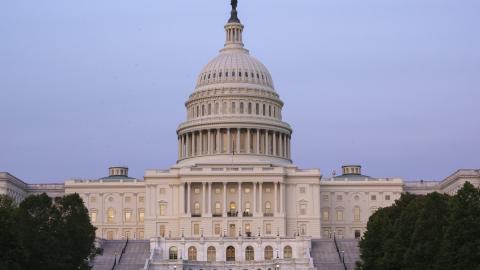Redistricting fervor is gripping our states’ capitals, as red states and blue states one-up each other in a mid-decade battle to redraw congressional lines.
When red Texas and Missouri unveiled redistricting plans in recent months, blue states retaliated.
Californians are voting on Proposition 50, a measure pushed by Gov. Gavin Newsom to end-run the state’s legally mandated nonpartisan mapping commission.
The redistricting plan threatened by New York Gov. Kathy Hochul faced steep constitutional challenges, so Democrats this week filed a lawsuit against the city’s single Republican, declaring the improperly drawn lines.
As millions of Americans flee big blue-state governments, the next reapportionment will force an unprecedented transformation of both presidential campaigning and the makeup of the House of Representatives.
Major budget, economic, and social consequences will follow.
Population losses have cost Democrats electoral votes in their big states of New York and Illinois since World War II, but have been offset by California’s postwar population surge.
Once it turned blue in 1992, California’s electoral vote total peaked in 2000 and has declined since.
Meanwhile, Texas has grown exponentially: It now has the nation’s second-largest Electoral College delegation, while Florida’s has skyrocketed to the third-largest today.
This substantial and ongoing migration means the 2030 reapportionment could shift six to 12 electoral votes from blue states to red ones, upending traditional strategies in presidential contests.
For Republicans, for example, it could end the importance of recent swing states of Pennsylvania, Michigan, Wisconsin, and Nevada.
None of them will be needed for the GOP to secure an Electoral College win if just nine electoral votes shift to red states in 2030 and Republicans retain their traditional strongholds.
Meanwhile, Democrats would need all these swing states, plus Iowa, to win the White House.
In the House, reapportionment could have a similar effect, but the shift is less certain.
Texas, for example, redistricted this year because its last attempt after the 2020 reapportionment backfired.
The Lone Star State gained two seats, but its legislature approved a redistricting plan that protected incumbent Republicans’ congressional seats rather than adding to the GOP’s total.
Meanwhile, states like Illinois gerrymandered so effectively after the 2020 reapportionment that in 2024, Republicans won only 18% of the Prairie State’s House seats, even though the GOP won an incredible 47% of its House votes.
When the 2030 reapportionment shifts the swing states in the presidential election, the nation’s swing voters will shift along with them.
After 2020’s reapportionment, the swing states remained the Rust Belt, and their swing votes were industrial workers.
That goes a long way toward explaining President Donald Trump’s focus on protecting and expanding manufacturing jobs.
When Rust Belt states are no longer the squeaky wheel, new swing states will grab the political spotlight — with Iowa at the top of the list.
Expect agriculture issues to dominate politically once again, and look for Democrats to restore Iowa as the first-in-the-nation caucus.
Americans have been given a choice: between economic growth and opportunity in low-tax, low-spending states on the one hand, and expansive welfare benefits in high-tax, big-spending states on the other.
They have voted with their feet for opportunity.
Bad policies drove out good voters.

















